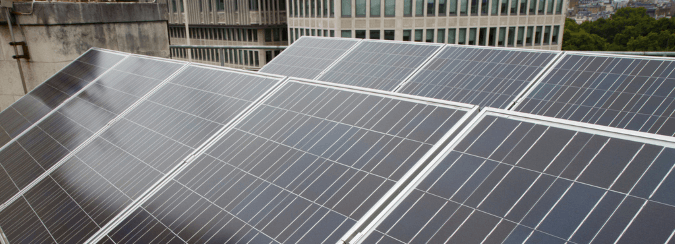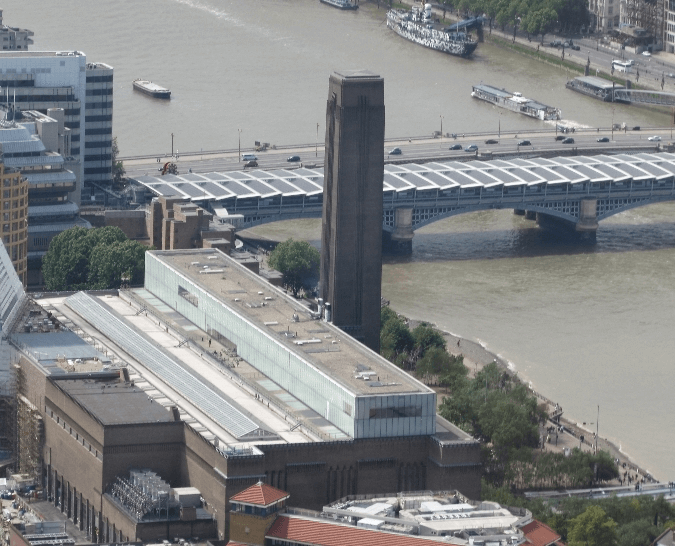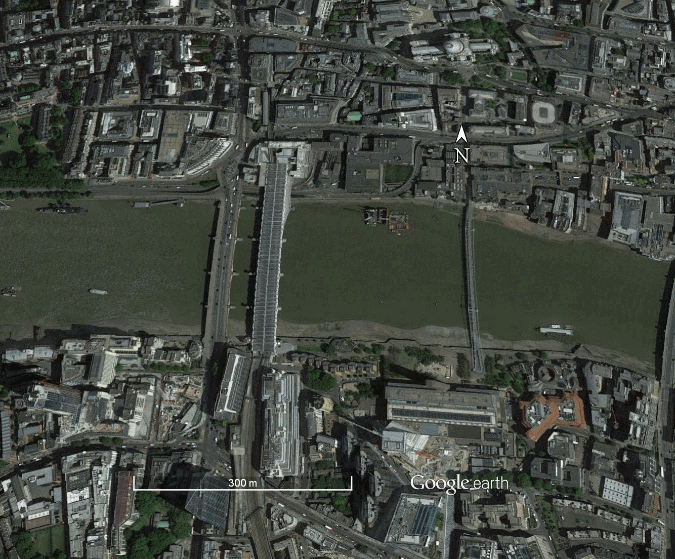 Figure 1: Solar photovoltaic (PV) panels in London.
Figure 1: Solar photovoltaic (PV) panels in London.
London, one of the largest, diverse and exciting cities, hosts more than 16,000 solar photovoltaic (PV) panels [1] on its roofs! However, London has still a long way to go in order to meet its true solar potential. A 2011 study by the Environmental Committee of Greater London Authority (GLA) indicated that over 20% of London’s electricity needs could come from Solar PV energy [2].
Table 1 below shows the results of the 2011 GLA study [3] compared to estimates from the Department of Energy and Climate Change (DECC).
| Photovoltaics | Year | Methodology | |
| DECC | GLA | ||
| Installed capacity (MW) | 2010 | 3,163 | 11,784 |
| 2031 | 3,688 | 12,397 | |
| Electricity generation (GWh) | 2010 | 2,616 | 8,576 |
| 2031 | 3,050 | 9,083 | |
| Carbon savings (Mt CO2) | 2010 | 1.0 | 3.4 |
| 2031 | 1.2 | 3.6 | |
| % of London’s electricity demand | 2010 | 6.6% | 21.5% |
| 2031 | 7.8% | 23.1% | |
Table 1: London’s potential to meet part of its electricity demand from solar energy
The DECC method estimated London’s potential by taking into account the following:
- 25% of domestic properties
- 40% of commercial properties
- 80% of industrial properties
- 50% of all new domestic roofs
- Assumptions include 2kW domestic systems, 5kW commercial systems and 20kW industrial systems
The GLA method estimated London’s potential by taking into account the following:
Existing buildings
- Footprint of all buildings is calculated
- The roof area at a suitable orientation is determined
- The impact of overshading and competing building services is considered
- Conservation areas are removed and overall potential is calculated
New buildings from 2010 to 2031
- 50% of all new building are assumed to be suitable for photovoltaics
- System capabilities of 2kW and 5kW for domestic and non-domestic properties respectively are assumed
- No assumptions are made on the future increased efficiency of solar panels
You can read the full study here… Overall it appears that London could cover approximately 20% of its electricity needs by installing photovoltaic panels on its roofs. However, what are the potential benefits of 20% of London’s electricity coming from solar panels?
The Benefits of Increasing the Number of Rooftop with Solar Panels
- Solar energy is a passive form of energy generation which takes place on sunny or cloudy days;
- Helps to lower energy bills [2]. For example at Pager Power we installed rooftop photovoltaic panels in 2012. Between mid-August 2012 and mid-May 2015 our solar panels generated over 7,000 kWh. Overall, over the last 3 years approximately 8.5% of our electricity consumption was produced by our rooftop solar panels.
- Contributes in the reducing carbon emissions [2] and helps the environment
- Helps to manage the increased costs due to continuing rising costs of electricity prices [4]
- Reduce the pressure on electricity network distributor and overloaded grid [4]
- Coupled with storage, commercial rooftop solar panels could offer a 24-hour alternative power supply [4]
Let’s have a look at two interesting examples rooftop solar panels in London; the Blackfriars’s Bridge and BedZed.
Blackfriars Bridge
Solarcentury installed over 4,400 solar photovoltaic panels on the bridge’s new roof. Over 6,000 m2 of PV panels provide 50% of the station’s energy needs whilst saving 450,000 kg of CO2 per year [5]. Blackfriars is now the largest solar powered bridge in the world. Luckily the son of Pager Power Chairman, Mike Watson, took a good picture of the solar panels installed on the Blackfriars’ Bridge when visiting the Shard. You can see the solar panels in the picture below.
 Figure 2: The solar panels covering the Blackfriars Bridge roof in London (picture taken by Harry Watson)
Figure 2: The solar panels covering the Blackfriars Bridge roof in London (picture taken by Harry Watson)
An animated aerial view of the rooftop solar panels can be seen in figure 2 below.
 Figure 3: An aerial view of the solar panels covering the Blackfriars Bridge in London
Figure 3: An aerial view of the solar panels covering the Blackfriars Bridge in London
BedZed – Beddington Zero Energy Development
This is an environmentally friendly housing development in Hackbridge, London. It is designed to create zero carbon emissions and has 777 m2Figure 4: Solar panels on the roof of Beddington Zero Energy Development – BedZed in Hackbridge, London.
The Potential
It is obvious an increased number of rooftop solar panels have benefits for London & Londoners. Let’s not forget that other countries like France have recently passed laws to increase the number of commercial rooftops having solar panels. There are thousands of commercial and non-commercial buildings with unexploited roofs which could produce cheap and green energy. Of course there are environmental and other constraints, but when planned properly, nuisance from reflections or other environmental effects could be minimised and solar panels could co-exist with the rest of urban infrastructure.
We installed solar panels on our roof in 2012 and we have no regrets. Hopefully other companies will do the same.
Image accreditations: “IMG_7133.jpg” by Tom Page / CC BY 2.0 / Image resized and cropped from original.
“BedZED” by Tom Chance / CC BY 2.0 / Image resized from original.
References
[1] Chaotic and unpredictable’ subsidy regime slammed as London rooftop market continues to falter, by Liam Stoker of Solar Power Portal. (Last accessed 14/08/2015).
[2] Decentralized energy capacity study – Phase 1: Technical Assessment, Greater London Authority. (Last accessed 14/08/2015).
[3] Decentralized energy capacity study – Phase 1: Technical Assessment (Table 5-1, p. 35), (), Greater London Authority. (Last accessed 14/08/2015).
[4] Commercial rooftop solar could be the key to preventing business black-outs, by Tim Purbrick of Solar Power Portal. (Last accessed 14/08/2015).
[5] Blackfriars: taking it to the bridge, by Solar Century. (Last accessed 14/08/2015).
